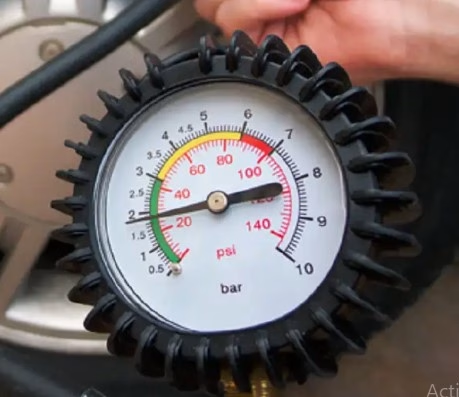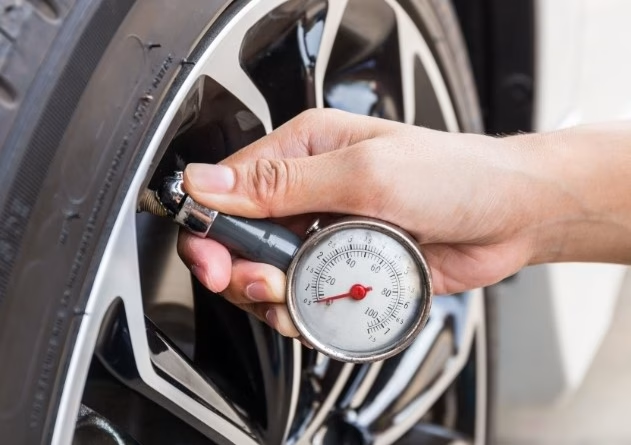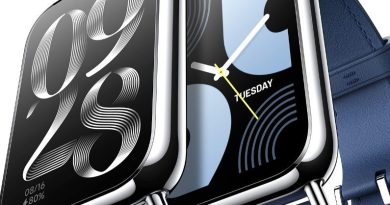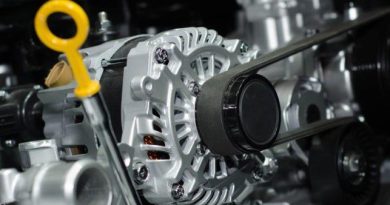How to Check and Maintain Tire Pressure Like a Pro
Learn expert tire pressure maintenance for safety, savings, and performance. Real-life case studies, advanced tips, FAQs, and pro guidance for global drivers.
Your tires are the only contact point between your car and the road, yet many drivers treat them as an afterthought. In fact, according to the National Highway Traffic Safety Administration (NHTSA), under-inflated tires contribute to more than 11,000 accidents annually in the U.S. alone.
Proper tire pressure affects far more than comfort—it’s a critical factor in road safety, fuel economy, and the lifespan of your vehicle. In 2025, with fuel prices fluctuating globally and cars becoming increasingly advanced, tire care remains one of the simplest yet most cost-effective habits every driver must master.

Why Tire Pressure Matters
Safety First
- Under-inflated tires flex too much, generate excess heat, and may blow out at high speeds.
- Over-inflated tires reduce traction, making it harder to brake and corner safely.
- Properly inflated tires provide the best grip, stability, and stopping distance.
Fuel Efficiency
The U.S. Department of Energy reports that under-inflated tires can lower gas mileage by 0.2% for every 1 PSI drop in pressure. That adds up to $150–$300 per year for the average commuter.
Longevity & Cost Savings
Maintaining correct tire pressure can extend tire life by up to 25%, meaning fewer replacements and lower ownership costs.
Want to take a full approach to car care? Explore our Car Maintenance Guide 2025: 10 Tips Every Driver Must Know for essential strategies that go beyond tire care.
Step-by-Step Expert Guide to Checking Tire Pressure
- Find the Recommended PSI
- Look in your owner’s manual or inside the driver’s door jamb for the correct pressure.
- Note: The number on the tire sidewall is the maximum limit, not the recommended pressure.
- For a reference chart, check Bridgestone’s tire inflation guide.
- Use a Quality Pressure Gauge
- Digital gauges are the most accurate and easiest to read.
- Keep one in your glove compartment for quick checks.
- Check Tires When Cold
- Always check in the morning or after the car has been parked for 3+ hours.
- Driving heats tires, temporarily increasing PSI and skewing readings.
- Remove the Valve Stem Cap
- Unscrew carefully and place it somewhere secure—you don’t want to lose it.
- Attach the Gauge
- Press the gauge firmly onto the valve.
- A hissing sound means it’s not sealed properly—try again.
- Inflate or Deflate as Needed
- Use an air compressor at a gas station or home.
- Release air by pressing the small metal pin inside the valve with the back of the gauge.
- For reference, check AAA’s tire inflation tips.
- Repeat for All Tires, Including the Spare
- Neglecting the spare is one of the most common mistakes drivers make.
- Inspect for Damage & Wear
- Look for cracks, bulges, or uneven wear—signs your alignment may be off.
- Rotate tires every 5,000–8,000 miles to promote even wear.
Tire Pressure Comparison: Under, Over, and Proper Inflation
| Tire Condition | Effects on Driving | Impact on Safety | Impact on Cost | Pro Tips |
|---|---|---|---|---|
| Under-Inflated Tires | Sluggish handling, longer braking distance, reduced fuel efficiency. | High blowout risk, poor traction in wet conditions. | Wears tread edges faster, reduces tire life by up to 25%, costs more fuel. | Check monthly and before long trips, especially in cold weather. |
| Over-Inflated Tires | Harsh ride, less traction, uneven contact with the road. | Higher risk of blowouts, poor grip during sudden turns or braking. | Wears tread center faster, may require earlier replacement. | Never exceed manufacturer’s PSI rating; check after heat exposure. |
| Properly Inflated Tires | Smooth handling, shorter stopping distance, best fuel economy. | Safer, more stable driving in all conditions. | Maximizes tire lifespan, saves $100–$200 annually on fuel and maintenance. | Use a digital gauge, follow the car’s recommended PSI, and include your spare. |
Maintenance Best Practices
- Monthly Checks: Make it a habit—set reminders in your calendar or phone.
- Seasonal Adjustments: Cold weather lowers PSI; summer heat raises it.
- Rotation & Alignment: Rotate tires every 5,000–8,000 miles; get an alignment check if you notice uneven wear.
- Professional Inspections: Have a mechanic check tires at least twice per year.
For deeper advice on extending tire and car life, see Consumer Reports’ tire maintenance tips.
Cost-Savings & Professional Tire Care: Going Beyond the Basics
Maintaining tire pressure isn’t just about safety—it’s also about money. Driving with the wrong PSI can drain your wallet faster than you realize. Let’s break it down with real numbers and professional insights.
The Cost of Poor Tire Pressure
When tires are under-inflated by just 5 PSI, you face:
- Increased Fuel Consumption: A 1–2% drop in fuel efficiency per PSI below the recommended level.
- Shorter Tire Lifespan: Tires wear out 20–30% faster when pressure is consistently low.
- Annual Losses:
- Average gas car owner: $300–$500 per year wasted.
- Delivery or fleet drivers: Losses can exceed $1,000+ annually.
Example Calculation:
A driver covering 12,000 miles annually with a car that averages 30 MPG will burn 40 extra gallons of fuel if tires are just 5 PSI under-inflated. At $3.50 per gallon, that’s $140 wasted on fuel alone—before adding tire replacement costs.
DIY vs Professional Tire Care
Not all tire maintenance is the same. Here’s how do-it-yourself (DIY) checks compare to professional servicing:
| Care Method | Pros | Cons | Best For |
|---|---|---|---|
| DIY Gauge & Gas Station Air | Cheap (gauge ~$15), quick, convenient, builds good habits | Less accurate if using poor-quality gauges, easy to forget checks | Everyday drivers |
| Professional Service Center | Precision calibration, advanced tools, can spot hidden damage, option for nitrogen inflation | Costs $20–$50 per check, requires appointment | Long-distance or business drivers |
| Nitrogen Inflation | Holds pressure longer, reduces tire aging, improves fuel efficiency | Costs $5–$10 per tire, not available everywhere | Fleet cars, luxury vehicles, hot climates |
Nitrogen vs Regular Air: Which Is Better?
Nitrogen-filled tires are becoming more common in 2025. Here’s why:
- Slower Pressure Loss: Nitrogen molecules are larger, meaning they leak 40% slower than regular air.
- Temperature Stability: In hot climates, nitrogen helps reduce expansion and blowout risk.
- Longer Tire Life: Studies show nitrogen inflation can extend tire lifespan by 10–15%.
Pro Tip: If nitrogen isn’t available, don’t wait—top off with regular air. It’s better to keep tires properly inflated with regular air than drive on low pressure waiting for nitrogen.
Real-Life Case Study: Uber Driver in New York
A rideshare driver averaged 50,000 miles annually. After switching to monthly professional nitrogen checks:
- Fuel costs dropped by $1,200 per year.
- Tire replacements reduced from 4 sets in 2 years to just 3 sets.
- Customer feedback improved due to smoother, safer rides.
Whether you use a DIY digital gauge or go for nitrogen at a professional service center, consistent care pays off. Even small adjustments add up to hundreds of dollars saved each year—plus a major boost in safety.
Common Mistakes & Pro Solutions
- Ignoring the Spare → Inflate spare during every check.
- Over-inflation → Leads to center tread wear. Stick to manufacturer specs.
- Under-inflation → Most dangerous mistake. Use a reliable digital gauge monthly.
Real-Life Case Studies
Case Study 1: Family in Toronto
A family neglected tire pressure checks for months. During a road trip, an under-inflated tire blew out, forcing an emergency stop on the highway. After adopting monthly checks and carrying a digital gauge, they’ve been accident-free for three years.
Case Study 2: Fleet Management Success in Europe
A logistics company introduced weekly tire checks for its delivery vans. Result? A 40% reduction in annual tire replacement costs and improved safety records. Drivers also reported fewer flats and smoother handling.
Deepen your knowledge with these related guides:
- Invest Smartly Without Losing Money: Beginner’s Guide 2025
- Car Maintenance Guide 2025: 10 Tips Every Driver Must Know
- Electric vs Gas Cars 2025: Which Is Cheaper in the Long Run?
FAQs
Q1: How often should I check tire pressure?
At least once per month and before any long trip.
Q2: Can I rely on gas station air pumps?
They work, but readings can be inaccurate. A personal digital gauge is more reliable.
Q3: Does weather affect tire pressure?
Yes—expect a 1 PSI drop for every 10°F decrease in temperature.
Q4: How do I know if my tires are over-inflated?
Your ride feels rough, and tread wear appears in the center only.
Small Effort, Big Rewards
Maintaining correct tire pressure isn’t complicated—it takes just five minutes a month. Yet this small habit dramatically improves your safety, fuel efficiency, and wallet health.
Whether you’re a daily commuter, fleet manager, or weekend traveler, proper tire care means fewer breakdowns, smoother rides, and longer-lasting tires.
Ready to level up your entire car care routine? Explore our Car Maintenance Guide 2025: 10 Tips Every Driver Must Know and ensure your vehicle stays road-ready in 2025 and beyond.



